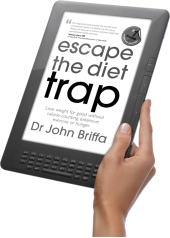There’s abundant evidence linking sunlight exposure with a reduced risk of chronic diseases including heart disease, several forms of cancer, multiple sclerosis and diabetes. If the sun is bright enough and high enough in the sky, sunlight can stimulate the product of vitamin D (actually, a hormone) in the skin. Higher levels of vitamin D in the body are also associated with a reduced risk of chronic disease. This supports the idea that sunlight’s apparent benefits are mediated through the production of vitamin D.
However, the nature of such so-called ‘epidemiological’ evidence proves little. All it tells us is that both higher levels of sunlight exposure and higher levels of vitamin D are associated with better health. None of this actually tells us whether sunlight is beneficial to health and even if it is, that these benefits are brought through higher levels of vitamin D.
However, it’s perhaps worth considering the fact that vitamin D receptors exist widely around the body including fat tissue, the adrenal gland, bone, brain, breast, cartilage, colon, hair follicles, intestine, skeletal muscle (muscles connected to bones such as those in the legs and arms), cardiac (heart) muscle, kidney, liver, ovary, pituitary gland, retina, sperm, thyroid and uterus (womb). The presence of a receptor for a substance can be taken as a sign that this substance exerts some influence over the structure and/or function of that tissue.
Another piece of evidence which points to a direct effect of vitamin D on health is the fact that vitamin D has been found to have the capacity to bind to about 3,000 sites within DNA [1]. This research also found that vitamin D could affect the activity of 229 genes, including several the influence conditions that are linked to vitamin D.
However even if vitamin D directly affects health, this does not mean that the benefits attributed to sunlight are necessarily only related to its ability to boost vitamin D levels. We know, for instance, that light exposure can have a profound influence on mood and sleep during months when no vitamin D will be made in the skin at all.
Also, in an animal model, light exposure has be found to help multiple sclerosis and that this benefit could not really be explained by changes in vitamin D levels. See here for more about this.
I was interested to read about a piece of research announced today in which the impact of light and vitamin D on blood pressure was assessed. You can read a report of this research here. http://www.sciencedaily.com/releases/2013/05/130507195807.htm
This research, conducted in Edinburgh, UK, involved exposing individuals to a 20-minute session under lamps that gave off ultraviolet light as well as heat. The impact on blood pressure was compared to another session in which the individuals were exposed to similar lamps that gave off heat but no UV light.
According to the report, the UV light exposure led to a significant reduction in blood pressure compared to exposure to heat alone. And, it seems, there was no appreciable change in vitamin D that might explain the difference in effects. The benefits appear to have been put down to an increased production of nitric oxide, which has blood vessel relaxant and blood pressure lowering effects.
Without access to the actual paper (due to be presented at a scientific meeting on Friday) it’s difficult to say much more about this research. But it adds to the idea that the benefits of sunlight are likely to come from mechanisms that go beyond vitamin D. Also, it was interesting to note recognition from the authors of this study that whatever impact sunlight has on skin cancer risk needs to be balanced with whatever benefits may be had in terms of improved cardiovascular health. And that’s before we begin to consider any other benefits sunlight has in terms of chronic diseases such as cancer, diabetes and multiple sclerosis.
References:
1. Ramagopalan SV, et al. A ChIP-seq defined genome-wide map of vitamin D receptor binding: Associations with disease and evolution. Genome Res. 2010 Aug 24. [Epub ahead of print][hr]
[box style=”rounded” border=”full”]
Dr John Briffa’s best-selling ESCAPE THE DIET TRAP – lose weight without calorie-counting, extensive exercise or hunger is available in the UK and US
“This magnificent book provides the scientific basis and practical solutions to liberate you from yo-yo dieting and allow you to achieve sustained weight loss and enhanced health with ease.”
William Davis MD – #1 New York Times bestselling author of Wheat Belly
To read some of the dozens of 5-star reviews for this book [button link=”http://www.drbriffa.com/amazon-reviews-for-escape-the-diet-trap/” color=”silver” text=”dark” window=”yes”]click here[/button]
To buy a paperback copy of the book from amazon.co.uk [button link=”http://www.amazon.co.uk/Escape-Diet-Trap-John-Briffa/dp/0007447760/ref=tmm_pap_title_0?ie=UTF8&qid=1324815918&sr=1-1″ color=”orange” window=”yes”]click here[/button]
To buy a kindle version of the book from amazon.co.uk [button link=”http://www.amazon.co.uk/Escape-the-Diet-Trap-ebook/dp/B005ODY0RW/ref=tmm_kin_title_0?ie=UTF8&qid=1324815918&sr=1-1″ color=”orange” window=”yes”]click here[/button]

To buy a print copy of the book from amazon.com [button link=”http://www.amazon.com/Escape-Diet-Trap-calorie-counting-extensive/dp/0957581602/” color=”orange” window=”yes”]click here[/button]

To buy the kindle version of the book from amazon.com [button link=”http://www.amazon.com/dp/B00BLQ40QM” color=”orange” window=”yes”]click here[/button]
[/box]